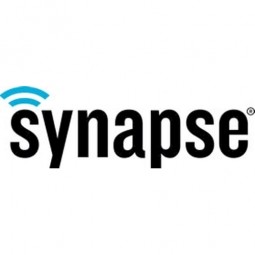
技术
- 功能应用 - 远程监控系统
- 基础设施即服务 (IaaS) - 其他
- 网络与连接 - 网关
- 网络与连接 - 射频收发器
- 网络与连接 - 射频识别
适用行业
- 矿业
适用功能
- 维护
用例
- 远程资产管理
客户
麦克韦恩延展性
关于客户
挑战
当您的起重机移动成吨的岩浆热铁时,您无法承受意外故障。 McWane Ductile 知道监控其设施内的起重机电机指标可以帮助防止机械故障,该故障会在头顶上搁置一大桶熔融金属。不幸的是,他们的传统有线监控系统无法在这种极端环境中处理移动物体。如果他们可以将无线功能集成到他们现有的设备中,他们就可以扩展他们的监控功能,而无需从头开始。
解决方案
基于 SNAP 的射频模块和物联网网关是 McWane Ductile 的完美解决方案。 McWane 将这些模块整合到监控传感器中,无需布线——这意味着 RF 模块可以作为电缆的直接替代品。借助模块上的 SNAP OS,无需进行复杂的工作即可配置 RF 数据路由。 SNAP OS 决定了如何通过模块形成的网状网络发送数据。传感器数据通过 SNAP 物联网网关传输到计算机,以便于监控。并且模块、网关和计算机直接连接到自己的网络上,无需与外部世界建立互联网连接。对于因害怕恶意黑客攻击而宁愿将设备连接到互联网的制造商而言,这是一笔巨大的交易。
收集的数据
Mechanical Force, Motor Metrics
运营影响

Case Study missing?
Start adding your own!
Register with your work email and create a new case study profile for your business.
相关案例.

Case Study
Underground Mining Safety
The goal was to produce a safety system to monitor and support underground mining operations; existing systems were either too simple (i.e. phone line) or overly complex and expensive, inhibiting deployment, and providing little-to-no support in event of an accident. Given the dangerous nature of the mining work environment and the strict regulations placed on the industry, the solution would have to comply with Mine Safety and Health Administration (MSHA) regulations. Yet the product needed to allow for simple deployment to truly be a groundbreaking solution - increasing miner safety and changing daily operations for the better.

Case Study
Mining Firm Quadruples Production, with Internet of Everything
Dundee Precious Metal’s flagship mine, in Chelopech, Bulgaria, produces a gold, copper, and silver concentrate set a goal to increase production by 30%. Dundee wanted to increase production quality and output without increasing headcount and resources, improve miner safety, and minimize cost.

Case Study
Fastenal Builds the Future of Manufacturing with MachineMetrics
Fastenal's objective was to better understand their machine downtime, utilization, quality issues, and to embrace cutting-edge manufacturing technology/process improvement capabilities to bring their team to the next level. However, there was a lack of real-time data, visualization, and actionable insights made this transition impossible.

Case Study
Joy Mining Systems
Joy equipment faces many challenges. The first is machine integration and control. The business end of the machine has a rapidly-spinning cylinder with 6-inch diamond-studded cutting teeth. It chews through rock at rates measured in tens of tons per minute. The system grinds through the rock in front, creating a rectangular mine tunnel. Hydraulic lifters support the ceiling as the machine moves forward. Automated drills and screws drive 3-ft long screws into the ceiling to stabilize it. The rock and coal fall into a set of gathering "fingers" below the cutting cylinder. These fingers scoop up the rock and coal and deposit it onto a conveyor belt. The conveyor passes under the machine and out the back. A train of conveyor belt cars, up to a mile long, follows the cutter into the mine. The rock shoots along this train at over 400 feet per minute until it empties into rail cars at the end. Current systems place an operator cage next to the cutter. Choking dust (potentially explosive), the risk of collapse and the proximity of metal and rock mayhem make the operator cage a hazardous location.

Case Study
Novartis Leverages IoT for Enhanced Drug Discovery
Novartis, a global healthcare company, was faced with the challenge of managing and making sense of a vast amount of data. The company had decades of data on how various compounds affect protein targets, with about a billion data points in total. This historical data was critical but sparse compared to the granular data currently being collected. Novartis uses an automated process that captures high-content image data showing how a particular compound has affected an entire cell culture, generating terabytes of phenotypic data. The challenge was to combine this historical data with the burgeoning phenotypic data and place it within the larger context of ongoing medical research from around the world. The team also wanted to combine its data with medical information from NIH’s PubMed, which contains about 25 million abstracts from some 5,600 scientific journals.








